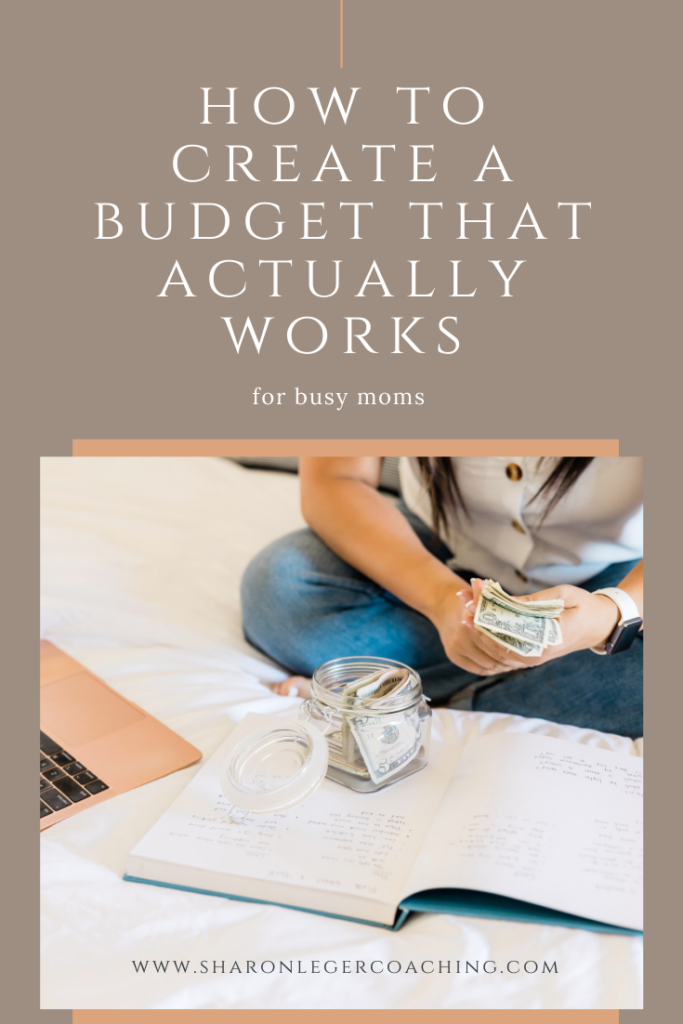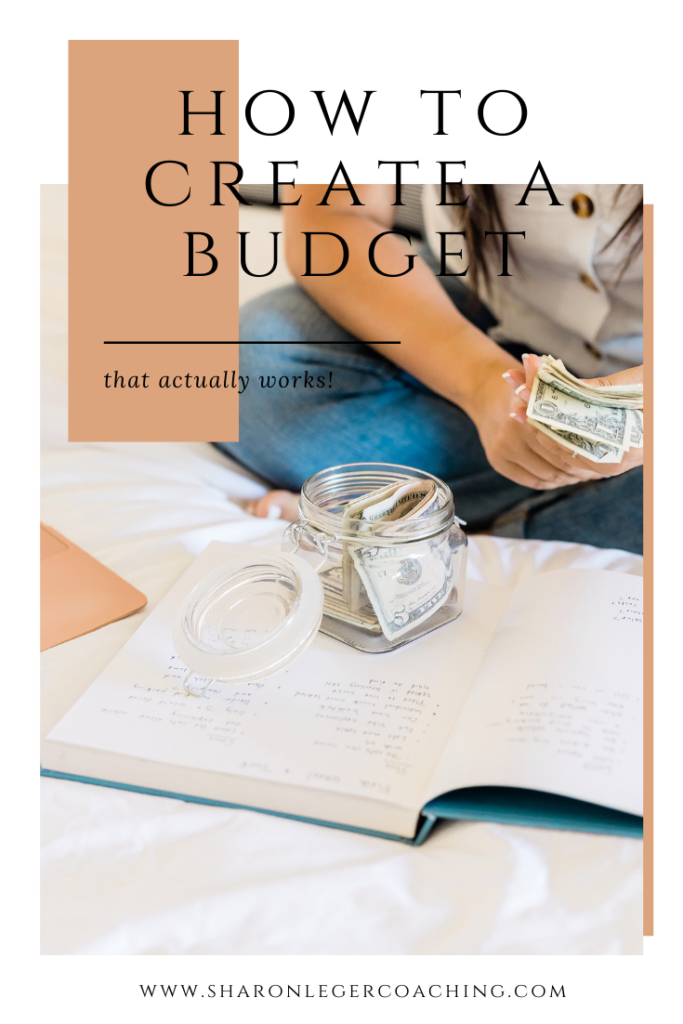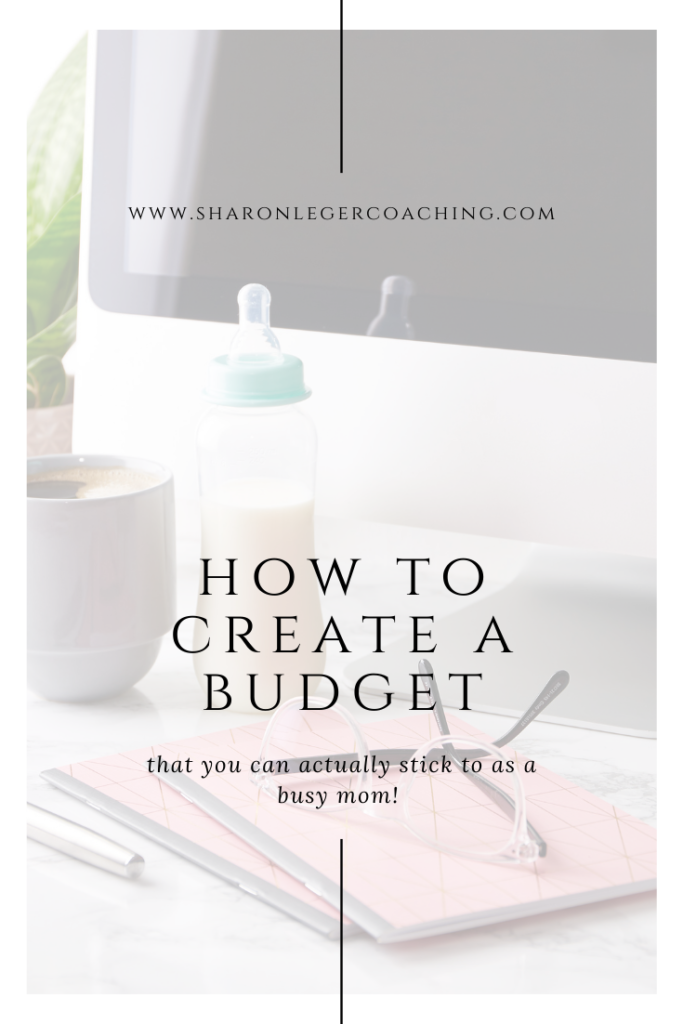Episode 13: How to Create a Budget That Works
If I had to pick a topic for a TedTalk, I would hands down choose personal finance. Why? Honestly, it has changed my life. Before I learned about personal finance, my husband and I lived on a swipe and pray method. It wasn’t great. All that to say, I am more than a little excited about today’s topic: how to create a budget that actually works!
Here we go!

How to Create a Budget That Works: Make It Zero-Based
A little background to get us started: my husband is a teacher and gets paid 10 months out of the year. I work for myself as a family photographer, so my income is somewhat fluid throughout the year. I do, however, have a set paycheck that I pay myself every month. If you are a small business owner that is interested in making that happen for yourself, you absolutely need to check out the book, Profit First, by Mike Michalowicz. It’s a game changer!
Step 1: Identify Your Income
OK, back to your zero-based budget. There are a ton of gurus out there that can probably tackle this topic more eloquently than I can, but I’m going to share with you the simple version that my family and I go by. In August every year, I sit down and write out the amount of income my husband and I expect to bring in for the entire month. For the sake of argument, let’s say it’s $5,000. Then, I write down all of our expenses for the month – groceries, gas, electric bills, daycare expenses, all the non-negotiables that we need to live.

Step 2: Subtract Expenses
From there, it’s just simple subtraction. I take the $5,000, subtract the fixed expenses and then see what we have leftover. From there, my husband and I decide how we want to allot the leftover money that hasn’t been assigned to a non-negotiable. For the most part, that becomes our family spending money and the money that we send to long-term savings. In order for this to be a zero-based budget, once all expenses are subtracted, the total remaining balance should be $0.
Step 3: Decide How To Handle Extra Income
Now, to be honest, this isn’t all of our income. Throughout the year, I give myself bonuses in my business based on my profit margins in my business. My husband gets several stipends and there are a few times a year that there is a third paycheck with no deductions for my husband, so we get an extra chunk of change in those two paychecks. Because this money is more variable though, we use this income for investments – retirement, college and our brokerage accounts.
I could get into our investments for days, but we’ll save that for a future episode. But feel free to shoot me a DM on Instagram if you want some resources that really simplify the investment process.

How to Create a Budget Without An App
OK, so how do I organize all this? For me, creating a budget was all about simplicity. I tried a few apps, but immediately got overwhelmed. Knowing myself, I was confident that if I made too complex of a system, that I would fail. I desperately wanted to avoid going back to the swipe and pray strategy of spending, so I made myself a Google doc. That’s right, a Google doc. This document covers all of our fixed income and expenses from August to June each year.
What the Google Doc Looks Like
On the first page, I list all of our expenses from our zero-based budget for a typical month. This is where things get slightly more complex. Because we get paid twice a month, I decide which bills are coming out of the first paycheck. This is paycheck A. Then I decide which bills are coming out of the second paycheck, that is paycheck B. After that, I just list every payday, label it A or B and then underneath, list the expenses for that paycheck.
And friend, that’s it! It’s a rolling document that is more or less open on my computer all day every day. If my husband felt brave and/or needed to, he has access to this document too and could more or less see what bills are due, what has been paid, what is pending, etc.

My Daily Personal Finance Routines
Just like with any habit, tracking personal finances requires consistency. To be honest, I go into our banking accounts just about every single day. On the Google doc, I will cross out a bill that clears, put transactions in italics that are pending and see if anything is due soon.
Just for peace of mind, I also pop into our credit card accounts just to make sure I know what is going on the credit cards that we pay off each month.
To help me stay consistent, I have a note in my MAP Book to check in weekly with our finances. But it’s rare that I forget these days, since it is so manageable.
And that’s it! Honestly, the heavy lifting comes at the beginning with mapping out the year. After that, it’s just a matter of checking in on everything to make sure the system is working.

How to Create a Budget: Financial Goals
One question that I get a lot when I’m working with clients, is how to work towards financial goals. I love this topic because my husband and I worked through this a lot when we were saving for our first maternity leave, my second maternity leave and getting out of car and student loan debt.
Financial Goal: Save For Maternity Leave
Let’s say your goal is to save for an extended maternity leave. Both of my daughters were born in December, and I received 6 weeks of paid maternity leave time as a public school teacher. That meant, I wouldn’t receive a paycheck from mid-January to early September – a total of 9 months.
Your first step in working towards your financial goal is figuring out how much money you actually need. My husband and I sat down and calculated our non-negotiable expenses (we cut things like date night, coffee, etc.). We then subtracted his paycheck from that amount to see how much we would need to make up each month. I always encourage you to do this step because it may actually be less than you think!
From there, it’s time to backwards plan. How much money would we need to save each month to have enough for me to take an extended maternity leave. Another thing to note is that when we were doing this math, it was very early in my pregnancy so we had time to financially prepare. You want to leave yourself the longest runway possible.
We knew that if I had to go back to work, it wouldn’t be the end of the world. That being said, I really wanted to be home those first nine months so we created a plan and stuck to it. Honestly, this is why I cringed every time someone said “You’re so lucky you got a long maternity leave”. Luck had absolutely nothing to do with it, preparation was key.
We follow this same process for any financial goal. Figure out how much money you need, break it up by the amount of time you have to save the money and then work your budget to make that extra money each month. When my husband and I were both teaching, there was no way to make extra money in our jobs, so we had to pull it from our spending. But now, as a small business owner, I can create more opportunities for income to fund our financial goals.
How to Create a Budget: Advanced Budgeting Systems
Whew, is your head spinning yet? I seriously love this stuff. Now, if you are a newbie at creating a budget, I want to give you a little disclaimer. This next section is going to be about some of the advanced budgeting systems we use. My husband and I only adopted these a few years ago, so please don’t be overwhelmed by them. That being said, I think there is value in at least being exposed to the ideas now. Then you can implement your budget and have an idea of the direction you are heading.
Handling Unexpected Expenses
Once my husband and I were consistent with our zero-based budget, we began to notice a pattern. Every time a big expense came up, like a car repair or vet bill, we got our butts kicked. Our budget was perfect for daily expenses, but everything imploded when a big expense came our way. These expenses weren’t even technically “unexpected”. Our life insurance hit twice a year and we scrambled to pay it with leftover grocery and gas money. That was stressful and never really worked.
Sinking Funds
That is why we began our sinking funds. It took awhile, but I found a bank that allowed you to open as many savings accounts as you like (Discover Bank – here is my affiliate link if you’re interested in getting $50 when you open an account, I would also receive $50). We opened 8 savings accounts that we monitor completely online. Each account has a name – pets, vacation, retirement, kid activities, home repairs, car, life insurance etc. Each month, we move a set amount to each account and let it build. Whenever we have an expense from one of those sinking funds, the money is there, it’s a simple transfer.
I know Lauren over at @laurensmoneymindset does this as well. Her system looks a little different, she keeps all of the money in one account and monitors it on a spreadsheet. It’s completely up to you, but sinking funds finally made us feel like we were budgeting like grown ups!
Using Credit Card Points
At our house, December is a crazy month. We celebrate Christmas and have 3 birthdays in our household. As you can imagine, that gets expensive quick. I realized that each year, I was getting a decent amount of Cashback Rewards points from Discover. I would just apply them randomly to my statement balance, which was nice, but never really felt strategic. Then, I realized I could actually save all of my rewards and use them all in December. Right now, I have almost $500 in rewards saved that I can use to buy gifts online. Easy, peasy! To maximize our rewards, we put everything on our credit cards for the whole year, unless there is a fee to do it. We then immediately pay the card off, so we never carry a balance.
It may not be for everyone, but it works for us!
How to Create a Budget: Recommendations
Here are a few resources that I have used in the past and have gotten a lot of helpful information from:
- Lauren from Lauren’s Money and Mindset – YouTube and Instagram. Lauren is a former attorney that is working with her husband to pay down six figure student loan debt. I love her processes and watching her budget!
- You Need a Budget, by Jesse Mecham – If you are brand new to how to create a budget, I highly recommend this book. It walks you through a zero-based budget, step-by-step.
- The Total Money Makeover, by Dave Ramsey – Dave’s Baby Steps really helped my husband and I at the beginning of our financial journey as we created an emergency fund and paid off debt. He’s definitely worth checking out, although I don’t 100% subscribe to all of his beliefs.
- Broke Millennial’s Takes on Investing, by Erin Lowry – If you’re ready to start learning about how to invest, this is the book for you. The author lays out investing in a simplistic way and I walked away from this book motivated and empowered to get started.

Let’s Make a Plan!
Today’s episode was A LOT! Right now, rate your current budget on a scale of 1 to 10. Does it need work? Is it going well? What would you change? In your MAP Book, write down a list of areas you would like to get more consistent with – maybe sinking funds or creating an emergency fund. Write down a list of financial goals that you have as well. Now would be a great time to chat with your partner about what you learned in today’s episode and decide if you want to create a budget or get more strategic with your personal finance strategy.
If you enjoyed this episode, be sure to subscribe on Spotify or YouTube so you don’t miss next week’s episode: Episode 14: Consistency Over Intensity. This idea changed the game for me in terms of working out and making my daily habits stick, so you’ll definitely want to tune in. This will also help with your personal finance journey as you start to create your budget!
If you want to connect between episodes, be sure to give me a follow over on Instagram – @sharonlegercoaching. On my stories this week, I am going to be sharing with you the behind-the-scenes of what daily budgeting looks like for me if you want to see the process for yourself.
Finally, be sure to subscribe to my email list to get weekly personal growth delivered right to your inbox – and because I know you’re busy mama, I promise it will include a meaningful action step that will take you 2 minutes or less to implement!
Thank you so much for being here, mama! Get back to doing your thing, rocking your world and remember – keep growing! Little eyes are watching.
Did You Love This Episode?
If so, be sure to share it with a friend – this helps busy moms like you to find me!
And finally, you can also check out these related episodes that I think you’ll be obsessed with:
[…] this episode, be sure to subscribe on Spotify or YouTube so you don’t miss next week’s episode: Episode 13: How to Create a Budget That Actually Works. Personal finance is my obsession so I am literally bursting at the seams to chat about this with […]
[…] surprised to hear that I actually haven’t always been a personal finance nerd. If you listened to episode 13, I got positively giddy when we were talking about all things budget. But that is my destination, […]
[…] the big picture in our annual money meeting, is to review our monthly budget. As I mentioned in episode 13 about budgeting, my husband is a teacher and I am a small business owner. Because of that, we have to be on top of […]
[…] Financial stress is a thing of the past. Debt? Don’t have any. Retirement savings? It’s already happening. Good-bye forever, swipe and pray! […]
[…] How To Create a Budget That Works […]